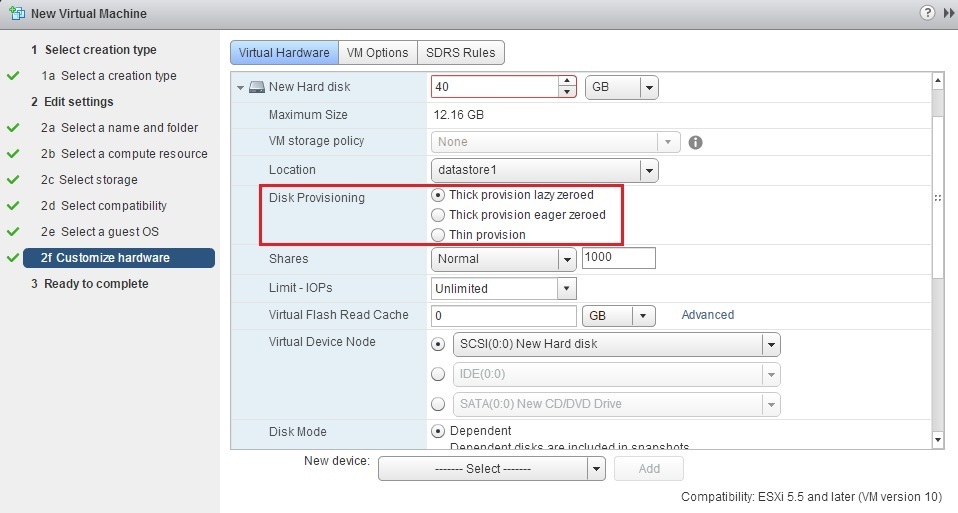Types of virtual disks
Three types of virtual disks can be used in a virtual machine in vSphere:
1. Thick Provision Lazy Zeroed – this is the default disk type. Space required for the virtual disk is allocated during creation. The space is zeroed on command on the first write from the virtual machine. A virtual disk that is created as 10 GB will consume 10 GB of space on the datastore, regardless of the actual disk usage in the guest operating system.
2. Thick Provision Eager Zeroed – the space required for the virtual disk is allocated during the disk creation. The space is zeroed out when the disk is created. This type of disk takes the longest to create, but there is a performance increase, since the zeroing process doesn’t happen at runtime. A virtual disk that is created as 10 GB will consume 10 GB of space on the datastore, regardless of the actual disk usage in the guest operating system. Some advanced vSphere features, such as Fault Tolerance, require that you use this disk type.
3. Thin Provision – a disk of this type uses only as much space on the datastore as needed. This means that, if you create a 10 GB virtual disk and place 3 GB of data in it, only the 3 GB of space on the datastore will be used. Note that, although the size will increase as required, it will not shrink if files within the guest operating systems are deleted. Thin provisioned disks have the lowest performance of the three disk types.
The virtual disk type is chosen during the virtual machine creation:
The following table identifies the differences between the virtual disk types in vSphere:
| Disk type | Creation time | Block allocation | Zeroing |
| Thick Provision Lazy Zeroed | fast | fully preallocated | occurs when each block is first written to |
| Thick Provision Eager Zeroed | slow | fully preallocated | occurs when the disk is created |
| Thin Provision | fastest | on demand | occurs when block are allocated |




